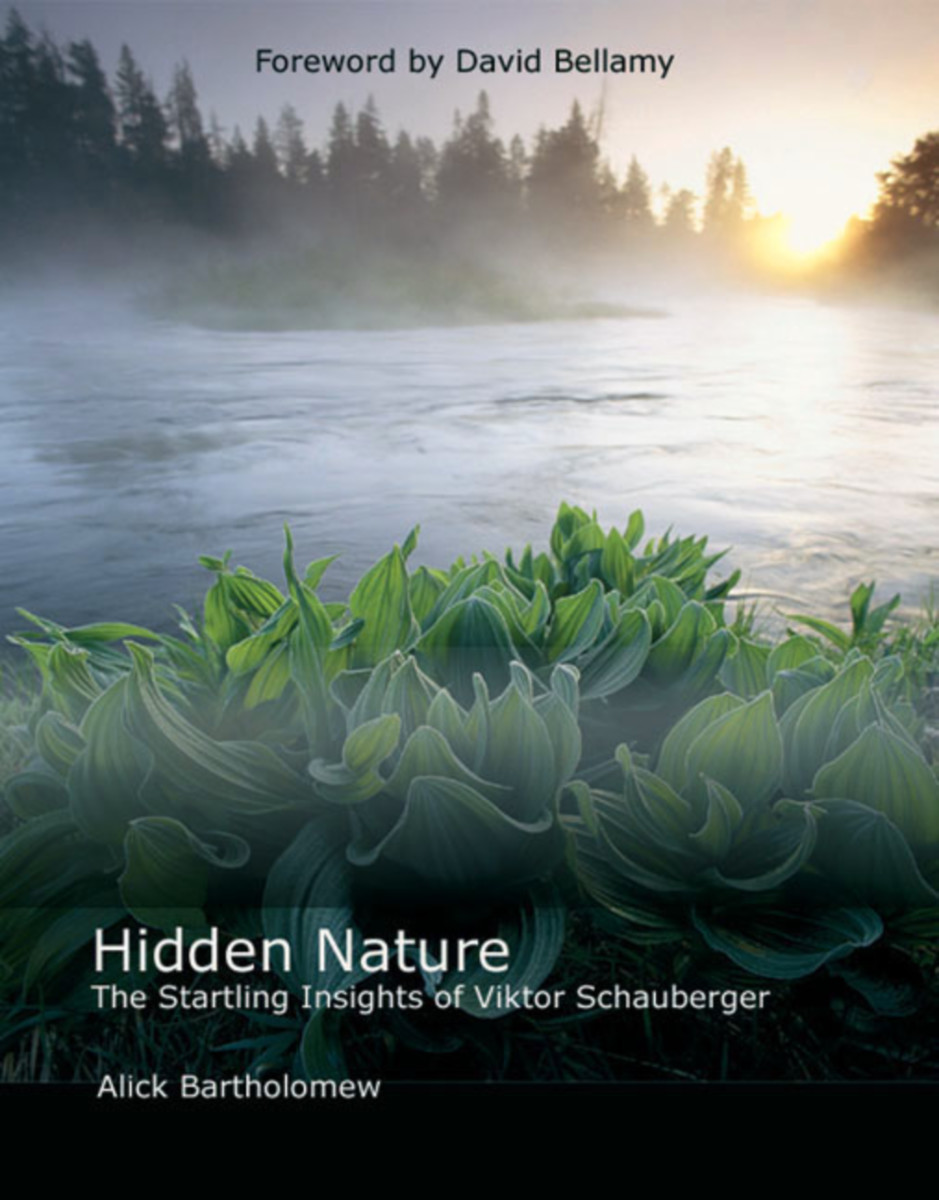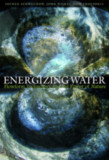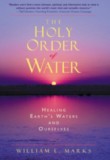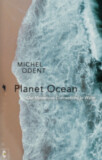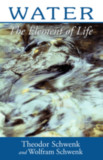Hidden Nature
The Startling Insights of Viktor Schauberger
- Publisher
Floris Books - Published
1st January 2003 - ISBN 9780863154324
- Language English
- Pages 288 pp.
Austrian naturalist Viktor Schauberger (1885–1958) was far ahead of his time. From his unusually detailed observations of the natural world, he pioneered a completely new understanding of how nature works. He also foresaw, and tried to warn against, the global waste and ecological destruction of our age.
This book describes and explains Schauberger's insights in contemporary, accessible language. His remarkable discoveries—which address issues such as sick water, ailing forests, climate change, and, most important, renewable energy—have dramatic implications for how we should work with nature and its resources.
“The book seeks to explain its concepts in simple language, assisted throughout by clear and well-annotated illustrations. Thought-provoking.” —Jeff Sanderson, Light, summer 2004
“Hidden Nature is a comprehensive breakdown of Viktor Schauberger's stunning ideas and observations. Alick Bartholomew strips away the complexity of Callum Coats’ book Living Energies, in order better to understand Schauberger's main themes. It will certainly transform your views on water. The graphics are the clearest I've seen in any book on Schauberger. I highly recommend it if you want to learn about Schauberger's natural science.” —Amazon UK review
“Hidden Nature gives a context for Schauberger's thinking and brings it into the framework of later understandings, such as Gaia theory and Lawrence Edwards' work. As one reads this very accessible book, one is left with a growing sense that his system is so simple, so sensible and rooted in reality, that one wonders why on earth more people don't know about it.” —Jane Cobbald, Star and Furrow, Winter 2003
“Alick Bartholomew is in a very good position to have written this introductory overview of Schauberger's work for the general reader. With its readable text and informative illustrations, this is an essential primer.” —David Lorimer, Scientific and Medical Network Review, Spring 2004
“A spacious and well-presented book with plenty of diagrams. The concepts are explained well. Fascinating and thought-provoking.” —Reforesting Scotland, Spring 2004
“The book’s scope is very broad and it is intended to be more accessible to the lay reader than the technical publications on Schauberger.... It has always puzzled me that Jack and Jill went *up* the hill for their water. The ‘anomaly point,’ central to Schauberger's understanding of how true springs form, might be a clue.... Schauberger's ideas, ideals even, resonate strongly with the modern debate about sustainability.” —New View, December 2003
“This is a timely book on a profound subject.... Hidden Nature reveals a timeless wisdom requiring urgent attention ... Water may seem to you so ordinary, but this book will totally transform your perception of it. After reading Hidden Nature you will know that it is the most precious substance on the Earth.” —Satish Kumar, Editor, Resurgence magazine
“Alick Bartholomew tells how in 1950 Richard St Barbe Baker arranged for Schauberger’s son, a trained physicist, to talk to a group of atomic physicists at Birmingham University. A few weeks later, Baker asked the scientists if they had held a postmortem on Schauberger's presentation. ‘Yes indeed,’ they admitted; they had decided that it was ‘unchallengable.’ ‘Then what are you going to do about it?’ asked Baker. ‘Nothing,’ was their retort. ‘Why not?’ ‘Because it would mean rewriting all the textbooks in the world.’ That, in my view, is reason enough to read this book.” —Jane Cobbald, Star and Furrow, winter 2003
“Alick Bartholomew provides a fitting first glimpse [of Schauberger's insights and inventions] with Hidden Nature. If you've had enough of the mechanistic, materialistic worldview and are looking for an alternative approach that's based on a real appreciation of Nature's workings, this is the book for you.” —Ruth Parnell, Nexus Magazine, February 2004
“Schauberger was an untutored genius well ahead of his time. His remarkable insights and investigations into water and living energies challenge established scientific dogmas then and now. Alick Bartholomew has done an admirable job of making Schauberger's work accessible and relevant to our age without compromising its artistic integrity. Read it for pure inspiration and for concrete ideas on disciplines as diverse as bioenergetics, consciousness, earth science, hydrodynamics, thermodynamics, and many others yet to be named.” —Dr Mae-Wan Ho, biologist, author, and editor of Science in Society
C O N T E N T S:
Foreword by David Bellamy
Introduction
PART ONE: AN ALTERNATIVE WORLD-VIEW
1. Schauberger’s Vision: Water wizard; Log flumes; Water, source of life; Subtle energies; Motion is crucial; Temperature controls; Water, source of life; Evolution; Balance; Implosion; The visionary
2. Different Kinds of Energy: Subtle energies; Viktor’s worldview; Why the mystery? Degrees of energy; Vortex, key to creative evolution; Energies as creative process; Spiritual science; Different dimensions; Changing octaves
3. Attraction & Repulsion of Opposites: Sun as fertilizing entity; Polarities; Opposites working towards balance; Gravity & levity
4. Nature's Patterns & Shapes: Sound as Resonance; Resonance is about qualities; Plants have perception and memory; Cymatics; Patterns & shapes; Patterns in motion; Rhythms in solar system; Cosmic rhythms; The confrontation of two Geometric Systems; Sacred geometry; The Golden Mean; The magic of the egg form
PART TWO: HOW THE WORLD WORKS
5. Energy Production: Inefficiency of modern technology; Entropy & ectropy; Scientific ’laws’; Energy pollution; The choice before us; Energy defines quality; The creative energy vortex
6. Motion, Key to Balance: We use the wrong form of motion; The ‘original’ motion; Types of motion
7. Atmosphere & Electricity: Earth’s atmosphere; Electricity; Terrestrial bio-condenser; Earth as accumulator of energy; Electrism and magnetism; Storms, water vapour and climate
PART THREE: WATER – THE SOURCE OF LIFE
8. The Nature of Water: Memory of water; Creation of water; Anomaly point of water; Qualities of water; How the river protects itself; Temperature gradient. & nutrient supply
9. The Hydrological Cycle: Full & half hydrological cycles; Temperature gradients & nutrient supply
10. Formation of Springs: The veneration of springs; Seepage springs; True springs; How spring water rises; Energy from deep ocean
11. How Rivers Flow: Stages of a river; Temperature & movement of water; Positive temperature gradients; Dams; Flow guides; Energy bodies; Formation of vortices; Vortices as the source of creative energy; Formation of bends; Conventional river engineering; Hydro-electric power
12. Supplying Water: Dwindling water supplies; Water for profit; Modern water treatments – chlorine – fluoride; Transmuting water’s memory; Tubular water movement; Water main materials; The wooden water main; Stuttgart tests; Circulation of blood
PART FOUR: THE LIFE OF TREES
13. The Role of the Forest: Evolution of the forest; Destruction of the forests; A moral tale; Tropical rainforests; Forestry; Monoculture; Biodiversity; Energy in the forest
14. Trees: Trees in the biosphere; Form of a tree; Trees and humans; Trees and colour; Their physical nature; Tree classification; Trees’ response to light; Light & shade demanding trees; Light-induced growth; Man-made depredations; Importance of photosynthesis; Creation of water; Maturation of water
15. Tree Metabolism: Sap movement; Temperature gradients; Trees as bio-condensers; Root systems. Soil and nutrition
PART FIVE: WORKING WITH NATURE
16. Soil Fertility and Cultivation: Crisis in intensive farming; Ploughing methods; Two kinds of electromagnetism; Golden plough; Bio plough; Aligning furrows; Grazing & grass cutting; Artificial fertilizers
17. Organic Cultivation: Biological agriculture; Soil mineralization; Organic farming, Biodynamic farming; Subtle energies in Nature; Cold Fire; Fertilizing agencies
Part Six: The Energy Revolution
18. Harnessing Implosion Power: An American consortium; A new kind of aircraft? The beginnings of implosion research; Schauberger’s Free Energy Search; Flying saucers; Biological vacuum; The repulsator; The implosion motor; The repulsine & flying saucer
19. Viktor Schauberger & Society: The human legacy; Implementing Schauberger’s research
Acknowledgments
Resources
Bibliography
Index
Alick Bartholomew
Alick Bartholomew studied Geology and Geography at the University of Cambridge, followed by graduate studies at the University of Chicago. He has commissioned and published many books on Schauberger and has been working with Schauberger material for more than twenty years.


